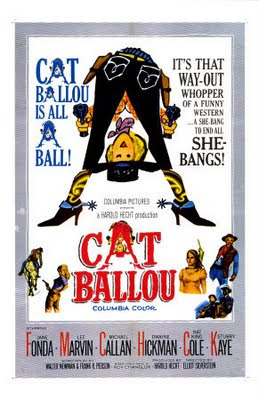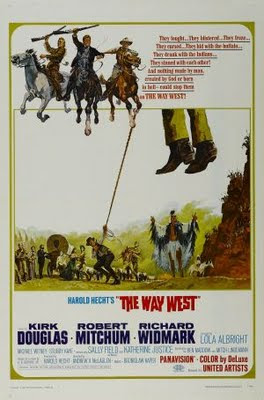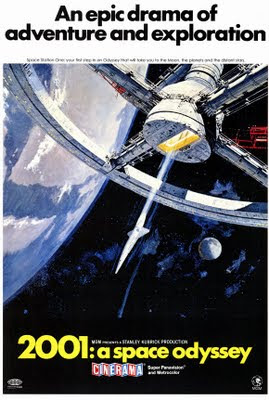
“What I need is a good defense, ‘cause I’m feelin’ like a criminal.” – Fiona Apple

Ocean’s Eleven (1960, Lewis Milestone)
Now that there are three movies in the recent Ocean’s franchise, some people may tend to forget that the Clooney / Pitt / Damon / et al film was a remake. Okay, so maybe nobody forgot, but the slick packaging of the Soderbergh trilogy has somehow outshined what was once a Rat Pack cult classic. The main five members of the 1960s version of the Rat Pack (which stemmed from the 50s version as headed by Humphrey Bogart) all appear together, as five of eleven former members of the World War II 82nd Airborne Division. Together, they hatch a plan to rob five different Las Vegas casinos in one night. At the time, it must have been the height of cool, at least to some. But, in hindsight, it was a little goofy, yet with a more realistic ending.
Seeing as the lead trio of the film are all crooners, it was perhaps inevitable that Ocean’s Eleven would be part musical. Dean Martin performs one of his signature numbers, “Ain’t That a Kick in the Head,” this performance marking the first time that many heard the song. Sammy Davis, Jr. sings the weird “almost” title track, “Ee-O-Eleven,” breaking the fourth wall by looking into the camera, and with lyrics that reference the plot of the film. Oddly, Sinatra has no performance of his own, unless you count his prank phone calls where he “imitates” people’s voices in some of the worst dubbing instances I’ve ever seen. Whereas the Soderbergh remake is relatively fast-paced and dynamic, the 1960 version takes its time, especially in the Seven Samurai / Magnificent Seven inspired “getting the group” together sequences.
It takes a full hour until we arrive at the planning meeting for the heist. Up until then, we spend a great deal of time and energy on getting to know each member of the team when that may not be entirely necessary. Of course, another big difference is the discrepancy between five casinos and three, as well as the much more impenetrable technologically driven safeguards of today. Soderbergh further makes things easy on himself by consolidating all of the casino targets into one central vault. This additionally makes the plan, and everyone’s part in it, more refined and like a well-oiled clockwork machine. The eleven military vets (why are they doing this again? Is this a commentary on military pay?) must hit five separate casinos, splitting their members up into two each, with Sammy left over to drive the garbage truck.
The biggest difference is in the outcomes of the heists. Hollywood may love a happy ending, but one of these versions doesn’t end in the criminals’ favor. Clooney and Pitt tend to always come out smelling like roses, ending up one step ahead of businessmen, authorities, and rival thieves. They can’t lose. The Rat Pack, on the other hand, are forced to hide their loot once Richard Conte’s character has a heart attack, and a former gangster offers to help the cops capture the remaining ten robbers. In a rather ingenious twist of fate, the cops outwit the criminals who are left right where they started. The way that the film is put together may be a bit clunky, but the remakes proved that the premise is sound. The film ends with a little meta note, with the group walking down the strip in front of the Sands marquis, with the names of the Rat Packers in larger than life letters, possibly intimating that they tried to rob the hands that fed them.
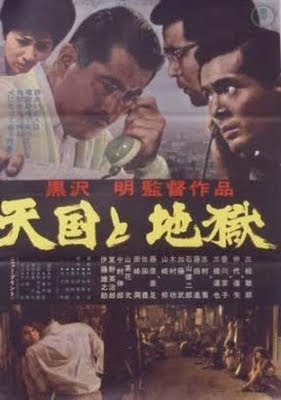
High and Low (1963, Akira Kurosawa)
Akira Kurosawa is known for his astounding samurai films, inspired by westerns, but he was also a big fan of noir and crime. Although it may be difficult for me, as a big Kurosawa fan, to point to one exceptional example, High and Low certainly does stand out. Adapted from an Ed McBain novel of the 87th Precinct, Kurosawa turned what might have been an ordinary police procedural into a psychological study of ethics in a capitalist society. Toshiro Mifune and Tatsuya Nakadai star as Gondo and Chief Detective Tokura, respectively, a powerhouse one-two punch of actors at that time. Gondo is an executive at a women’s shoe company who refuses to make shoes more cheaply, sacrificing quality, in order to boost profits. This uncharacteristic display of morals in a world of rampant capitalism is rare and, of course, puts him at odds with the other executives. While they try to oust him from the company, Gondo launches a counteroffensive, trying to buyout a majority of the company stock.
That night, an attempt is made to kidnap Gondo’s son. When the kidnapper calls, Gondo and his wife are inconsolable and he quickly makes the decision to use the money set aside to take over the company for the ransom. In a shocking twist, it turns out that the son’s playmate was kidnapped, not the son. Suddenly, Gondo has to think twice about using the money for the ransom. The ethical debate between self-interest and the interest of a neighbor or community could be talked about forever, and Kurosawa certainly makes his point with this scene and the following action. In other words, it turns out that Gondo might not be the ethical dynamo we once thought he was. Gondo finally agrees and they make an incredibly well shot money drop from a train window.
The remaining portion of the film is pretty much all police procedural. There is a great “sum-up” scene in which the precinct detectives run down all the information from the case, step by step, bit by bit, with each one covering one particular aspect. The first half is quite Hitchcockian in nature, with much of the action taking place in a boardroom, a small living room in a house, or a train, reminding us (at least) of Rope and Strangers on a Train. The second half lets us into the world of the police and their intelligent pursuit of a kidnapper. Though many of us may have guessed that Gondo’s business rivals were behind the kidnapping, it turns out that it was perpetrated by someone who lived in the poor village below Gondo’s richly appointed abode, the discrepancy of wealth proving too much for the unbalanced and jealous villager. In that way, High and Low is not just crime procedural, but also incisive social commentary. The title itself becomes clear once the kidnapper's motivation is revealed, made even more artistic by the closer translation of the Japanese title, Heaven and Hell. I wouldn’t expect anything less from such a master.
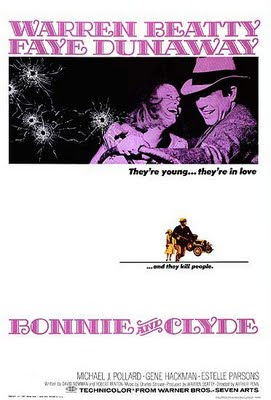
Bonnie & Clyde (1967, Arthur Penn)
Arthur Penn’s classic, Bonnie and Clyde, was originally thought to be only drive-in theater fodder; a quick yet entertaining romp without artistic value. What ended up happening is evident in the film’s legacy. Nominated for nine Oscars, and taking home two, Bonnie and Clyde is a masterful look at crime, friendship, love, loyalty, and economics in the Depression era. Warren Beatty plays Clyde Barrow, while Faye Dunaway plays his paramour, Bonnie Parker. While the two are magnetic, capturing frailty, passion, and complexity in every scene, other newcomers tend to steal the show, such as the two young Genes, Hackman and Wilder. Those two built careers out of their roles in this film, showcasing their wondrous talent, especially evident in Hackman’s early whoops of joy and Wilder’s petrified expressions of fear.
Bonnie and Clyde is particularly relevant today considering our current financial crisis. The young felons may have inspired later film characters such as Natural Born Killers’ Mickey and Mallory, but where the latter pair were sociopaths, Bonnie and Clyde were more tragic heroes, victims of a country’s bad policies gone wrong, merely trying to fend for themselves. Just like Mallory, however, Bonnie falls immediately for Clyde, even in the midst of a crime against her mother as he attempts to steal her car. Of course, even though the circumstances of the Depression somewhat forced their hands, that’s not to say they didn’t have psychological problems, nor that they were completely virtuous, or even that the notorious lovebirds didn’t enjoy their crimes. But, the history behind it reveals just as much culpability on the part of the government as the robbers. To the public and the press, Bonnie and Clyde are like modern day Robin Hoods, especially after allowing one bank customer to retain his funds. What started as small time heists to make money that would help to make ends meet quickly escalates into violence. Once it crosses that threshold, there is no turning back.
Bonnie and Clyde ends just how one might expect, with a bloody shootout, one of the most vivid and stark in film history. The doomed pair, in their hubris, are riddled with bullets, unable to evade the law forever. The events are fairly historically accurate, even recreating famous photos of the famous culprits, including the shots of the death scene. However, the film took liberties with the characters’ inner motivations and psyches, giving Barrow a case of impotence. Bonnie and Clyde is beautifully shot, a landmark of cinema in terms of stark violence, glorifying flawed anti-heroes, and presenting multi-dimensional and debatable issues. While taking an American History class, I was given the option to receive extra credit by watching Bonnie and Clyde and then writing a short review. I wasn’t able to take it on then, but hopefully this will suffice for karmic extra credit.







